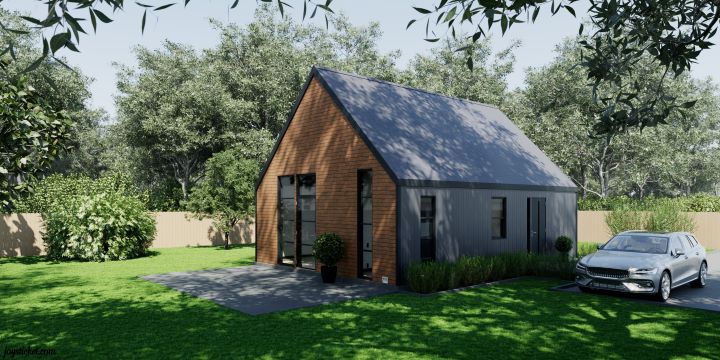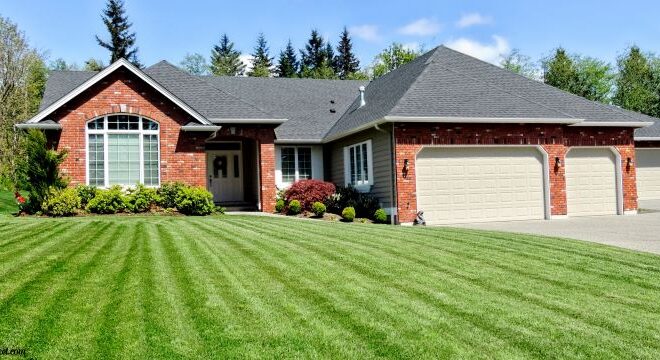
Streamlining Operations: The Advantages of Modular Electrical Houses for Industrial Applications
Table of Contents:
- The Basics of Modular Electrical Houses
- How Modular Design Enhances Efficiency and Flexibility
- Case Studies: E-Houses in Action
- Comparative Analysis: Traditional vs. Modular Build Approaches
- Cost-Benefit Considerations When Implementing E-Houses
- Customization and Scalability: Adapting to Industry Demands
- Sustainability Aspects of Modular Electrical Houses
- Future Trends in Modular Infrastructure Solutions
As the industry’s heartbeat quickens, companies continuously seek innovative solutions to streamline their operations. Modular electrical houses (MEHs), prefabricated structures designed to accommodate electrical equipment safely and efficiently, stand out in this quest. These versatile units, also called e-houses, are not merely a trend but an embodiment of operational finesse, embodying modularity, agility, and sustainability. Modern industrial operations can benefit from integrating an electrical house, especially when scalability and efficient project execution are top business priorities.
The Basics of Modular Electrical Houses
Beyond their modern and functional appearance, modular electrical houses represent a revolution in industrial infrastructure. These pre-engineered, fully equipped buildings are constructed offsite in a controlled factory environment. Designed to safeguard critical electrical components, including switchgear, transformers, and HVAC systems, MEHs are engineered to meet the strictest of building codes and industry standards. They arrive at their destination ready to be deployed, reducing complexity and increasing safety and compliance. As a testament to their structural integrity, modular buildings are lauded in industries for their resilience and adaptability.
How Modular Design Enhances Efficiency and Flexibility
The design principles behind modular electrical houses are rooted in efficiency and flexibility. With most of the work completed offsite, the onsite assembly of MEHs is remarkably swift, substantially reducing the timeline of construction projects. Such speed is invaluable for businesses operating under tight deadlines or where traditional construction might face delays due to adverse weather conditions. Flexibility is another critical advantage. A MEH can be easily resized, repurposed, or relocated to another site, providing unparalleled flexibility ideal for dynamic industries that experience periodic shifts in demand and operations.
Case Studies: E-Houses in Action
A look at the case studies of modular electrical houses in various settings corroborates their practical value. For instance, remote mining operations have significantly benefited from deploying MEHs, enabling electricity distribution in areas where building a permanent structure would be prohibitive in cost and time. Similarly, MEHs have been swiftly deployed to restore vital infrastructure in emergencies like natural catastrophes. The practicality and resilience of e-houses have stood the test of real-world applications across the globe.
Comparative Analysis: Traditional vs. Modular Build Approaches
The distinctions are clear and significant when juxtaposing the traditional, onsite construction methods with modular techniques. Conventional building processes are highly susceptible to delays, often due to uncontrollable variables such as supplier setbacks, labor shortages, and inclement weather conditions. Furthermore, the consistency and precision offered by the factory setting of modular construction lead to fewer errors and higher construction standards. Projects that opt for modular electrical houses experience high predictability regarding budgeting, scheduling, and final quality outcomes.
Cost-Benefit Considerations When Implementing E-Houses
An incisive examination of the costs associated with modular electrical houses reveals a landscape rife with long-term financial benefits. These modular solutions may require similar up-front investments to traditional structures, yet they distinguish themselves with considerable ongoing savings. Reduced site disruption during assembly, diminished reliance on skilled onsite labor, and decreased maintenance over time all contribute to a lower total cost of ownership. Moreover, the potential for relocating or repurposing the MEH means it can be re-invested in future projects, offering a financial return that extends well beyond a single application.
Customization and Scalability: Adapting to Industry Demands
Modular electrical houses rise to the challenge of industry-specific demands through their inherently customizable nature. Whether an operation calls for complex control systems, specialized layouts, or specific regulatory compliance, MEHs can be designed to meet these exact specifications. The structures can grow with the enterprise, seamlessly integrating additional modules to accommodate expansion or changes in operational scope. This scalability ensures that an investment in a modular electrical house can adapt and evolve with the company’s trajectory.
Sustainability Aspects of Modular Electrical Houses
Embracing sustainability is no longer a corporate choice but a necessity, and MEHs represent a leap forward in eco-friendly construction practices. The production of these houses generates significantly lower levels of waste compared to conventional construction due to precise material requirements and reduced onsite activities. The MEH’s design often includes energy-efficient features such as improved insulation and optimized heating and cooling systems. As industries prioritize reducing their carbon footprint, MEHs align with these green objectives, mitigating the environmental impact of building projects as highlighted by research on the sustainability of modular structures.
Future Trends in Modular Infrastructure Solutions
The horizon for modular infrastructure, including electrical houses, is innovative. By incorporating intelligent technologies, such as the Internet of Things (IoT), MEHs have the potential to become digital intelligence interfaces in addition to equipment shelters. Imagine e-houses that monitor system performance in real-time, provide predictive maintenance alerts, and integrate seamlessly with broader intelligent grids. The potential to enhance operational efficiency through data analytics and remote management places MEHs at the forefront of the next industrial evolution.
In conclusion, adopting modular electrical houses heralds a new era of efficiency and sustainability in industrial operations. By offering streamlined construction processes, flexibility in deployment, and enhanced energy management capabilities, these innovative solutions empower industries to optimize their operations and reduce their environmental footprint. The seamless integration of intelligent technologies further enhances their utility, paving the way for more innovative, interconnected industrial ecosystems. As industries embrace the advantages of modular electrical houses, they position themselves at the forefront of sustainable innovation, driving progress toward a cleaner, more efficient future. With their myriad benefits, modular electrical houses stand poised to revolutionize industrial applications, offering a compelling solution for companies seeking to streamline their operations while minimizing their environmental impact.



